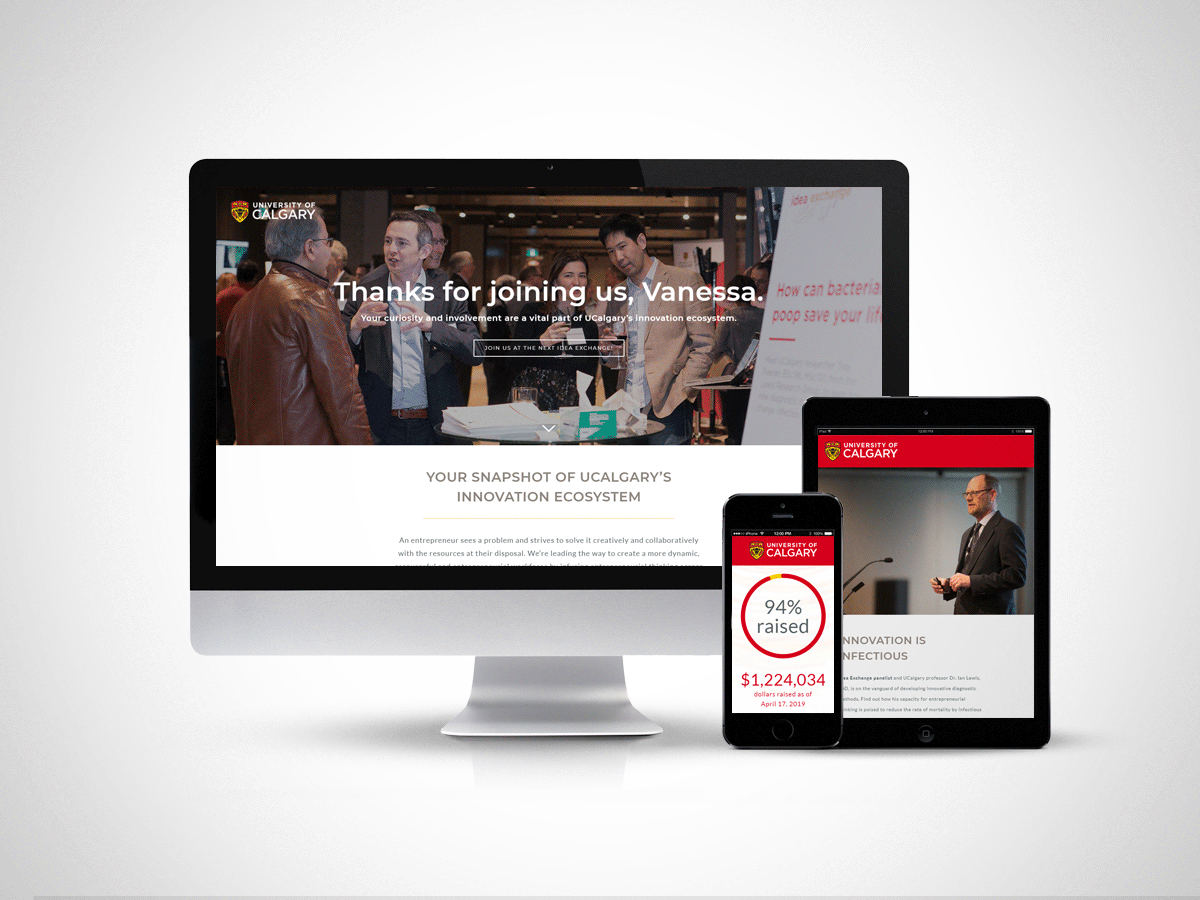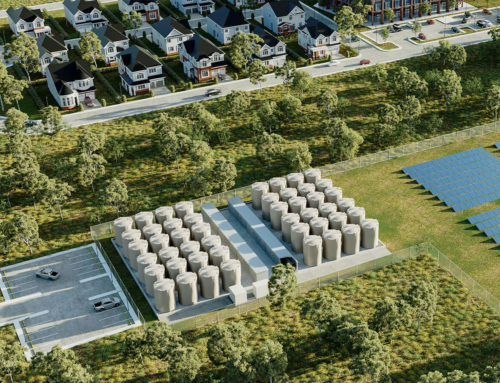Project Description
UCalgary Idea Exchange
Winner: 2019 CASE Awards, Advancement Practices and Initiatives: Alumni, Student, Donor and Community Engagement Programs, Gold
UCalgary Idea Exchange is a fairly recent program that brings hot topics and alumni from various cities together. The purpose of these events is to give the UC fundraisers and executives a chance to present their areas of research to potential donors in a less-formal situation. It’s basically a mixer with great people and great conversation.
A common courtesy of these regional events was to send each attendee a personalized “thank you” email on the morning after the event. I designed and built the email base in Marketo. After the first season of Idea Exchange, we decided to try increasing donor engagement by using these emails to guide our audience to a personalized website which included a summary of the evening, further related reading/videos, and a campaign fundraising update. Each of these web pages included a couple of donor CTA’s as well as an invitation to sign up for the next event in their city.
We (the web developer and I) researched the existing UCalgary Drupal CMS and determined that it was not robust or flexible enough to deliver the personalized experience. Since there was no proprietary info on these microsites, I suggested and received approval to design and build them on a WordPress platform. We used a base template and designed/wrote/built/playtested the first microsite in less than 10 business day (mainly because that’s how many days we had until the next Idea Exchange event ;^)
The design was developed to reflect the existing UCalgary online brand presence, in order to provide a seamless transition from Idea Exchange through to the official campaign donation portal. I can’t say how many people donated as a result, but the real purpose of these microsites was to drive traffic to the campaign website, and that’s what it did.
I wish I had the analytics from these microsites, because the intial clickthrus to the campaign website were much higher than they had experienced before.
Here are two of the microsites:







